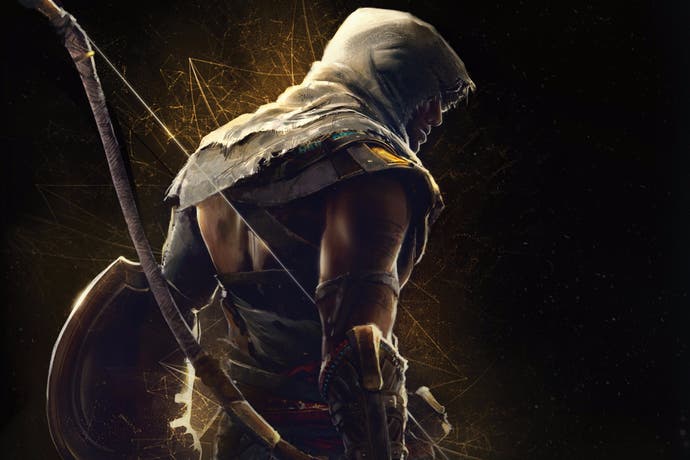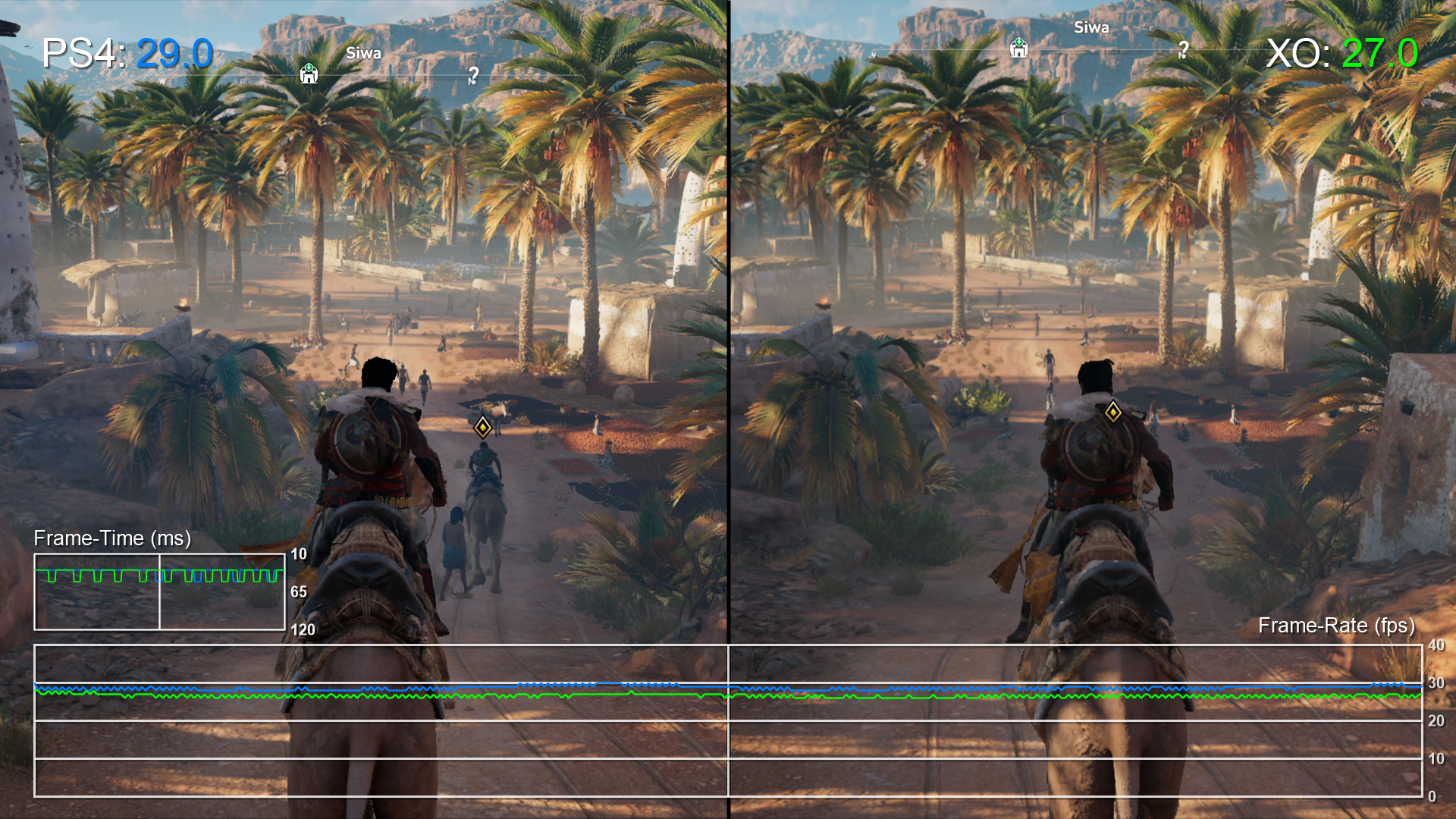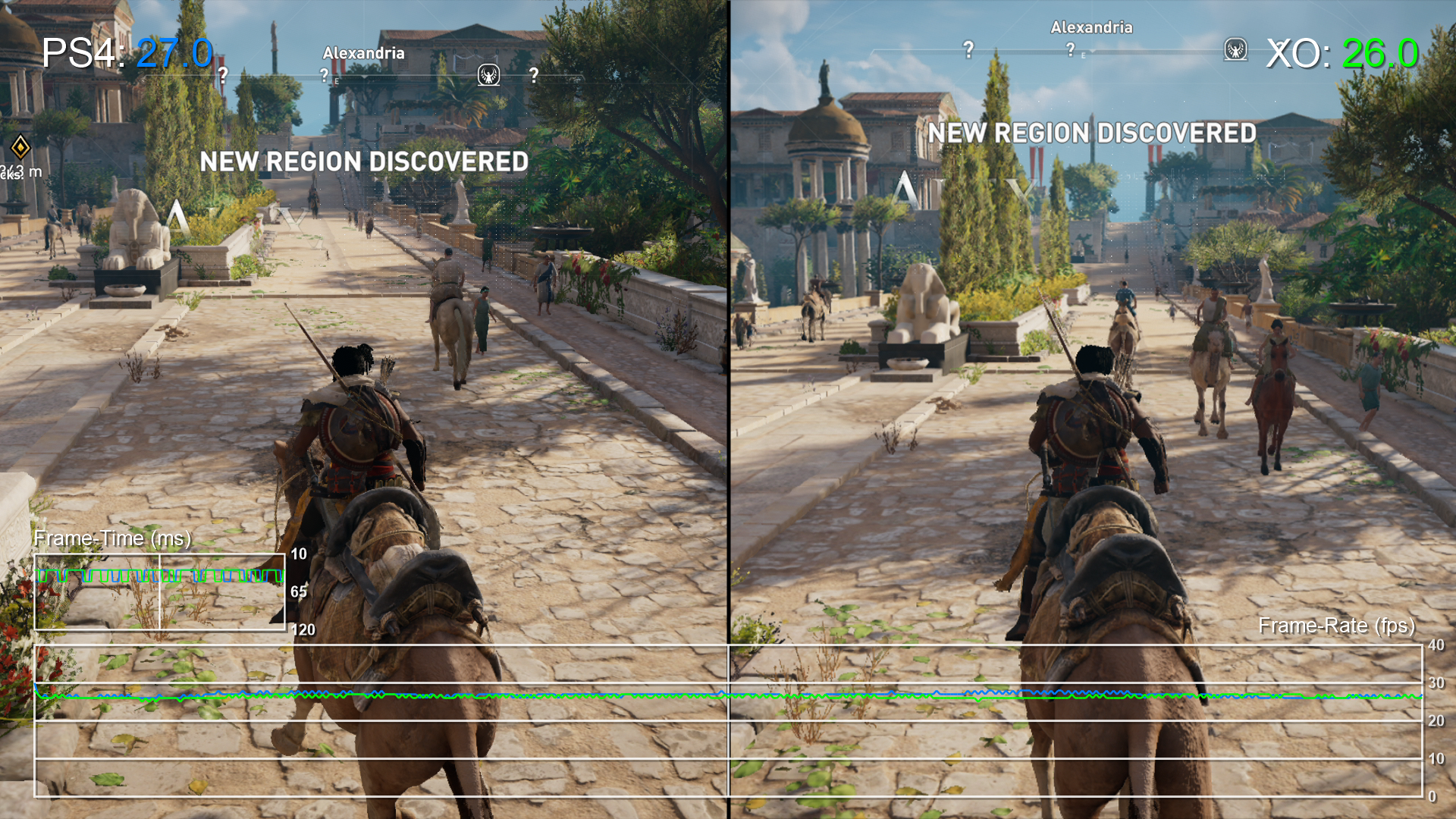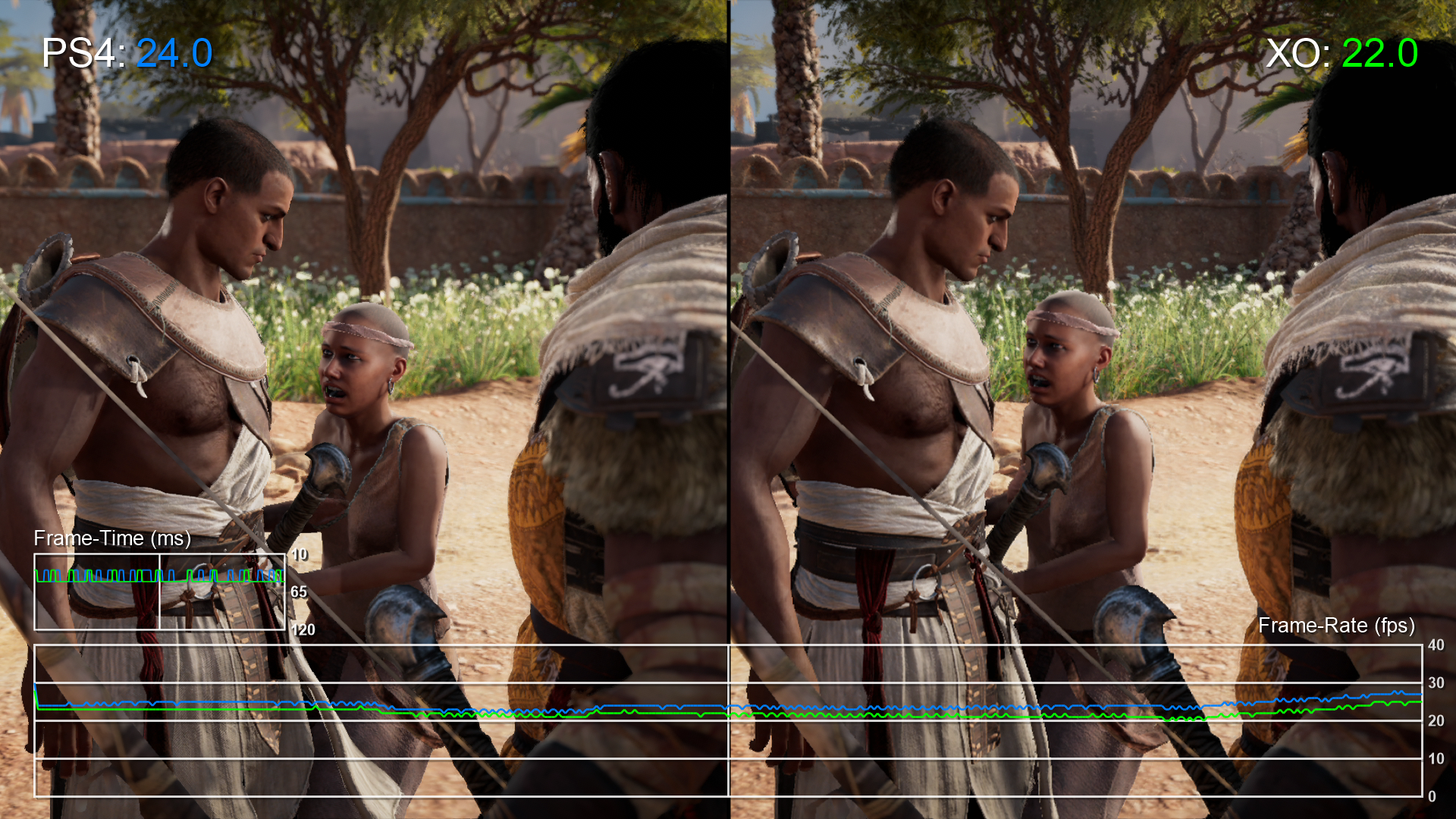How does Assassin's Creed Origins on Pro improve over base PS4?
Plus initial Xbox One impressions and metrics.
After a year on hiatus, the Assassin's Creed franchise returns, refreshed in all areas - and that includes its technology. We hope to bring you more about the game's technical foundations soon, but what's clear is that materials, animation and motion capture have been pleasingly improved, while image quality moves on to the next level. Draw distances are further extended with less pop-in - all the better to service an in-game world 4x the size of Black Flag's - while lighting is on another level. Meanwhile, PlayStation 4 Pro support looks solid enough, hinting at even better things to come for Xbox One X.
In terms of the game aesthetic, we're looking at a massive revamp compared to Unity and Syndicate, and Ubisoft has allowed the respective console GPUs to flex their muscles as much as possible. The days of the 900p parity between base PlayStation 4 and Xbox One in AC titles are over. Dynamic resolution is deployed on all systems, and this produces large variations in results: the standard PS4 spends most of its time at native 1080p, with just small drops beneath, while Xbox One is more aggressive with its scaling - we've only had limited time with the Microsoft code so far, but we've noted 792p, 864p and 900p pixel-counts.
All eyes are on PlayStation 4 Pro, however, especially when factoring in the imminent arrival of Microsoft's new console. The boost here varies according to the complexity of the scene, with variations between 1350p and 1584p measured during our tests so far. Does Assassin's Creed Origins use checkerboarding? The bulk of the evidence suggests no. However, infrequent edge-cases (particularly on the feathers of Senu, Bayek's eagle chum) show the same kind of edge cross-hatching we saw on the E3 trailer, which was apparently running on Xbox One X hardware. We hope to hammer down this detail soon.
While the presentation of Assassin's Creed Origins is undoubtedly softer than native by quite a chalk (something upcoming comparisons with the PC version should confirm), all versions of the game are solid, with very little edge-shimmer or other aliasing artefacts. The smart money would be on a temporal anti-aliasing solution here, which is deployed on all systems. Ubisoft has aimed for a very natural-looking, organic world in Origins, with lots of grass, plants and foliage. The effect would be compromised severely by pixel-popping on these elements, but consistency in motion is excellent overall. This is a huge upgrade over prior AC entries.
However, the by-product of temporal AA is the softness it adds to the image, which begs the question of just how much of an upgrade there is between base PS4 and Pro - after all, titles with similar anti-aliasing techniques, such as Uncharted 4, Titanfall 2 and the revamped Skyrim - look rather similar between systems to the untrained eye, even with the resolution differential factored in.
Assassin's Creed Origins is similar in this regard, but PlayStation 4 Pro owners lose some of the softness in the image and gain clarity as the resolution scales up - more detail is clearly resolved on the 'super-charged' console. Texture filtering doesn't seem to be increased, but the extra resolution offers more sampling data, resolving into more even more detail, occasionally producing big improvements in the detail level. Sawtooth edges are few and far between in this game owing to the temporal anti-aliasing technique, but where they do occur, there's a clear jump in fidelity as we move up the console power ladder.
The title's visual feature set is essentially identical across all platforms - there are the same core art assets, identical anti-aliasing and very similar effects work and shadow quality. Very early tests on Xbox One possibly suggests that extreme distance detail may be slightly cut, but otherwise, there's very little to tell each version apart - Ubisoft clearly doesn't want to short-change any user. Beyond that, the question is the extent to which performance holds up across each piece of hardware.



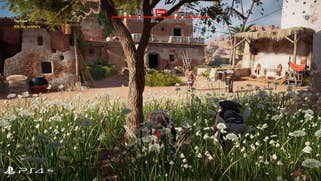











As always, 30 frames per second is the target frame-rate for Assassin's Creed (the exception being the non-patched on-disk code for Unity - this runs at an unlocked frame-rate, which we're looking forward to testing on Xbox One X!). By and large, the dynamic scaler does its work well here, ensuring consistent, level performance for a lot of the experience, with no frame-pacing issues. However, it's by no means a completely clean bill of health.
Regardless of system, frame-rate can buckle a touch in heavier scenes - stutter intrudes as the solid 30fps line is broken whether it's down to foliage, NPC count, or just general detail. Frame-rates remain in the high 20s for the most part, so it's hardly a deal breaker, but it occurs frequently enough to warrant a further optimisation push. In terms of PS4 vs Pro, both systems can often drop frames in similar scenarios, but in the heaviest scenes - lots of draw distance, plenty of foliage and an abundance in NPCs - the Pro does seem better equipped to keep you closer to the 30fps target. The fact it can't lock to the target throughout is a little disappointing though.
Cutscenes are an area that really let the game down. Performance tanks in many engine-driven cinematics, resulting in a wobbly 20-25fps readout regardless of the PlayStation hardware you're using. In some scenes, PS4 Pro is slightly faster, but across the sample of scenes we tested, the base hardware seemed to have a small advantage - but in all honesty, neither PlayStation acquits itself well here. Gameplay is where it matters though, and in this respect, while both PS4s are similar, the Pro seems better equipped to handle the harder scenes.
It's early days with Xbox One testing - we've literally only had a couple of hours to run through gameplay, pick out some stills and run a few clips through our performance analysis tools. However, initial results suggest that the base Microsoft hardware doesn't quite match its PlayStation 4 equivalent. Whether it's in matched gameplay or in those troublesome cutscenes, Xbox One is 1-2fps behind PlayStation 4 in areas where the Sony console can't hit its performance target.
Of course, the version we'd love to show you right now is Xbox One X - which by all rights should be the most impressive console version available. Alpha code showings at E3 and Gamescom weren't convincing - obvious visual bugs back in the day included low resolution textures in the medium and far distance, which caused concern. However, we're much more optimistic about now based on the three versions we've looked at thus far, all of which are more polished. Logically, Xbox One X can only build on the good work seen here on the other platforms.
Ubisoft has clearly built a game that scales nicely across hardware- the primary difference is a lower level of softness the more GPU power you have in your console. If PlayStation 4 Pro hands in something along the lines of a 1350p-1584p spread with its dynamic scaling, we'd expect significantly better from Xbox One X simply by virtue of its extra compute power and bandwidth. However, we do wonder whether higher level texture work can be factored in too by virtue of the new Microsoft console's additional four gigs of GDDR5. HDR is also a lock on the X, though we're told that all versions will get that upgrade at the time of the X's launch via a title update. First impressions on the new Assassin's Creed are certainly promising then, and we'll have more analysis and discussion on the game soon.
